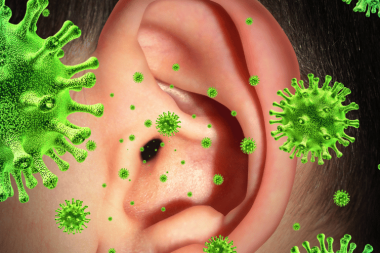Yeast infections are an incredibly common and uncomfortable condition, so it’s no surprise that many people want to know if it’s safe to swim with a yeast infection. The answer is: it depends on the type of infection you have and what kind of treatment you’re pursuing. In this blog post, we’ll take a look at the different types of yeast infections and how swimming can be affected by them. We’ll also go over some tips for avoiding further complications if you choose to swim while treating a yeast infection, as well as other important points to keep in mind. Let’s dive in!
What is a yeast infection?
A yeast infection is a fungal infection that can affect the skin, nails, and mucous membranes. It is most commonly caused by the Candida albicans fungus, but other types of fungi can also cause it. Symptoms include itching, burning, redness, and discharge. Yeast infections are not usually serious and can be treated with over-the-counter or prescription medications.

Symptoms of a Yeast Infection
A yeast infection can cause a number of uncomfortable symptoms. The most common symptom is intense itching in the affected area. Other symptoms may include:
-Burning sensation during urination or intercourse
-Thick, white vaginal discharge that resembles cottage cheese
-Redness, swelling, and cracking of the skin in the affected area
-Painful intercourse
If you are experiencing any of these symptoms, it is important to see a doctor or healthcare provider as soon as possible. They can confirm whether you have a yeast infection and prescribe the appropriate treatment.
Causes of a Yeast Infection
There are many different things that can cause a yeast infection, but the most common cause is an overgrowth of the Candida albicans fungus. This fungus is normally present in small amounts in the vagina, but it can overgrow if the vaginal environment changes. This can be due to factors such as taking antibiotics, pregnancy, or having uncontrolled diabetes.
Other potential causes include Douching, which disrupts the vaginal flora and creates an environment conducive to fungal overgrowth; tight-fitting underwear or clothes that trap moisture and heat; and sexual activity, which can introduce new bacteria to the vagina.
Treatment for a Yeast Infection
If you have a yeast infection, there are a number of over-the-counter and prescription treatments that can be used to treat the infection. The most common treatment for a yeast infection is an antifungal cream or ointment. These creams are applied to the affected area and help to kill the yeast and relieve symptoms.
If you have a more severe yeast infection, your doctor may prescribe an oral antifungal medication. These medications are taken by mouth and help to kill the yeast from within the body.
It is important to follow the instructions on any medication that you are prescribed, and to finish all of the medication even if your symptoms go away. This will help to make sure that the infection is completely gone and does not come back.
If you have any questions or concerns about treating your yeast infection, be sure to talk to your doctor or healthcare provider.
When to See a Doctor
If you’re experiencing symptoms of a yeast infection, it’s important to see a doctor. A yeast infection can be uncomfortable and cause a range of symptoms, including itching, burning, and discharge. If you’re unsure whether you have a yeast infection, your doctor can perform a test to confirm the diagnosis.
In some cases, yeast infections can be a sign of an underlying medical condition, such as HIV or diabetes. Seeing a doctor can help ensure that you get the right diagnosis and treatment for your condition.
Can You Swim with a Yeast Infection?
It is not recommended to swim with a yeast infection as it can worsen the symptoms. Yeast thrive in warm, moist environments and swimming pools provide the perfect environment for them to grow. The chlorine in pool water can also irritate the already inflamed skin. If you must swim, make sure to dry off immediately afterwards and wear loose-fitting clothing.
How to Prevent Yeast Infections
There are a few things you can do to help prevent yeast infections:
1. Wipe from front to back after using the restroom. This helps to prevent bacteria from the anus from getting into the vagina.
2. Wear loose-fitting, breathable clothing. Tight clothing can trap moisture and create a warm environment that is ideal for yeast to grow.
3. Avoid douching. Douching can disrupt the delicate balance of good and bad bacteria in the vagina and lead to infection.
4. Practice good hygiene. Be sure to clean your vaginal area thoroughly with mild soap and water every day.
What are the symptoms of a yeast infection?
If you have a vaginal yeast infection, you may experience one or more of the following symptoms:
• Burning, itching, and redness in the vagina and vulva
• A thick, white vaginal discharge that may resemble cottage cheese
• Pain during sexual intercourse
• Swelling of the vulva
If you have a yeast infection on your skin, you may experience:
• Itching and burning skin rashes
• White patches on the skin that can be peeled off (called “white plaques”)
• Redness and scaling of the skin

How do you treat a yeast infection?
If you have a yeast infection, you may be wondering if it’s safe to swim. The good news is that swimming is generally safe for people with a yeast infection. However, there are a few things you should keep in mind to help prevent the spread of your infection:
-Wear clean, dry swimwear. Avoid tight-fitting swimsuits or clothing as this can trap moisture and foster the growth of yeast.
-Don’t stay in wet clothes or swimwear for long periods of time. Be sure to change into dry clothes as soon as possible after swimming.
-Avoid hot tubs or whirlpools as these can also promote the growth of yeast. If you must use one, be sure to shower immediately afterwards.
-Wash your hands thoroughly after using the restroom or touching any areas that may be infected.
By following these simple tips, you can help prevent the spread of your yeast infection while still enjoying a refreshing swim!
Conclusion
In conclusion, it is best to avoid swimming or anything else that could put you in direct contact with a large body of water if you have a yeast infection. You should also consult your doctor for advice on how to manage the infection and make sure you take all necessary steps to keep it under control. Swimming is enjoyable but your health must come first, so keep this information in mind before taking any risks when dealing with a yeast infection.










Leave a Reply